The rugged edge of Antrim, with its remote glens, sheer cliffs, tiny fishing villages, pristine beaches and colourful history, is one of the world’s more stunning and least spoiled coastlines.
Discover all this and more with our guide to Northern Ireland's Antrim coast.
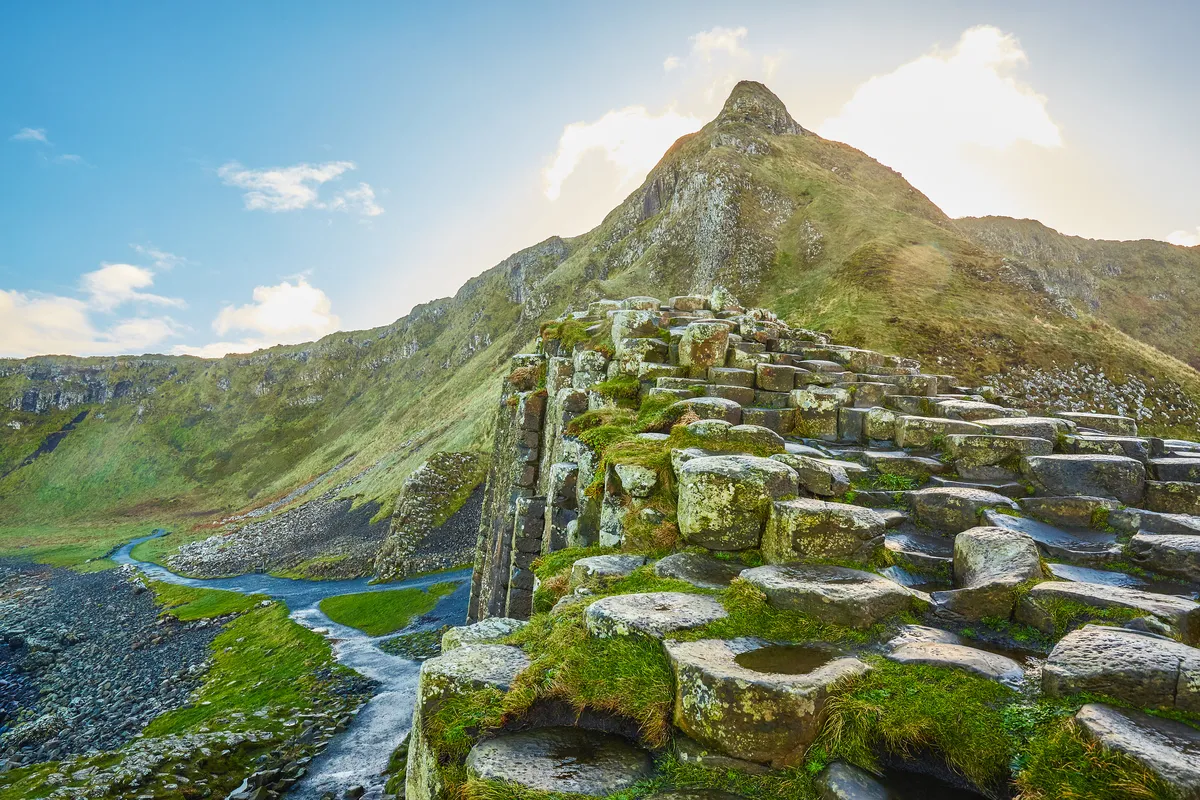
Why visit the Antrim coast?
Northern Ireland has seen tourism boom over the past two decades. The Giant’s Causeway’s basalt majesty is world famous, and another magnet lures visitors to these parts: Game of Thrones fans want to see where the hit TV series was filmed. Among other sites, viewers flock to the dramatic Dark Hedges, a tunnel of overarching beech trees that star as the Kingsroad on screen; to the precipitous ruins of Dunluce Castle to see the real-life Castle Greyjoy; and to Ballintoy’s attractive harbour, the fictional setting for Lordsport in the Iron Islands.
The coastline is dotted with harbour villages and seaside towns with inlets and mooring spots. The seascape looks across to Scotland’s west coast, over sandy beaches that are so inviting it’s hard to keep going. The turquoise water and magnificent waves make it look out of place on a map of the UK. California, eat your heart out.
History of the Antrim coast
The 11th Earl of Antrim lived in Glenarm Castle on the coast of County Antrim in Northern Ireland. His favourite spot was a hilltop behind his pepperpot-chimneyed pile with spectacular views across the sea to Scotland. He loved that glorious panorama so much that he asked to be buried on the hilltop, in an upright position, so he could continue posthumously to savour it.
The Buzzard, as he was known, died in 1918. His pallbearers duly staggered three miles uphill with his corpse. Unfortunately they were so exhausted by the time they reached the top that they inserted the coffin upside down – or so the story goes.
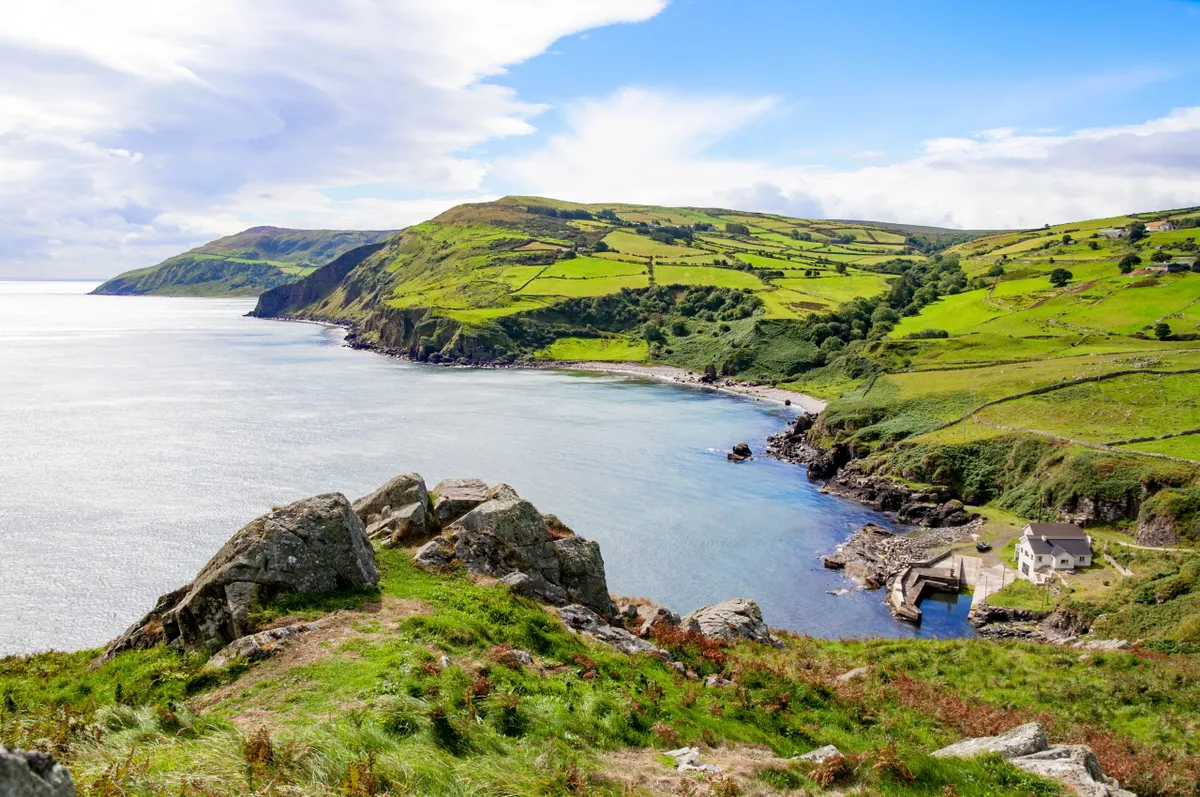
Things to do on the Antrim coast
The Antrim coast is packed with things to see and do. Starting mid way up Northern Ireland's east coast, our list of recommended sites follows the coast north then west towards Londonderry.
The Gobbins
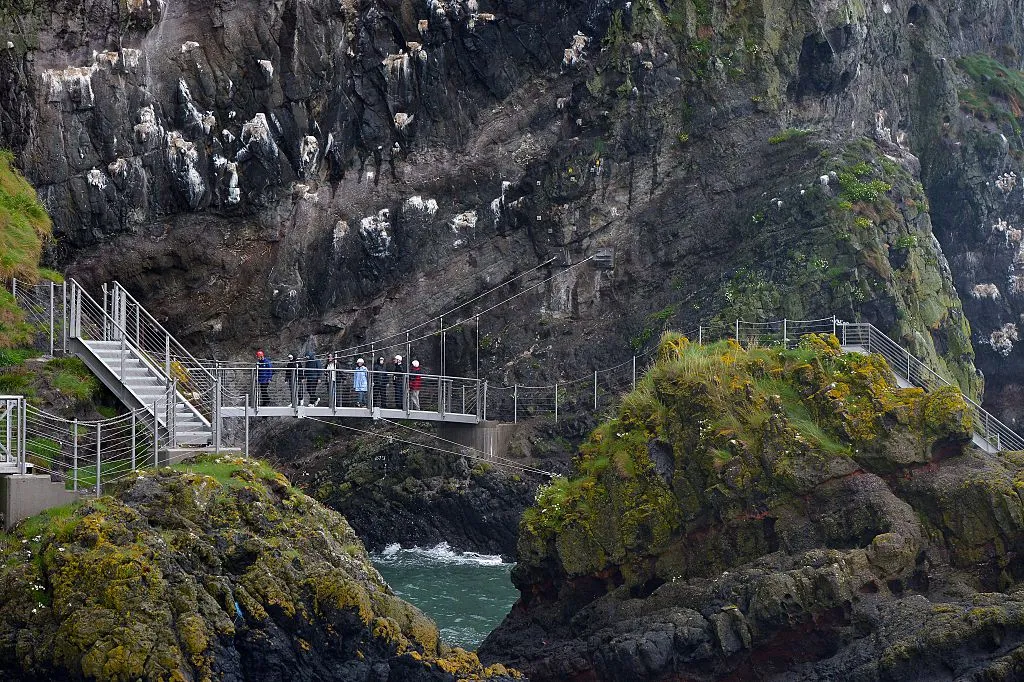
In the late 1800s, the Belfast and Northern Counties Railway Company built a line out here from Belfast. To lure day-trippers, it designed a spectacular one-and-a half-mile walkway along a cliff face above the churning waves. Blasted from sheer basalt, the path led through tunnels, past caves and over chasm-spanning bridges. Opened in 1902, the Gobbins was a huge success until it fell into disrepair during the Second World War.
Larne
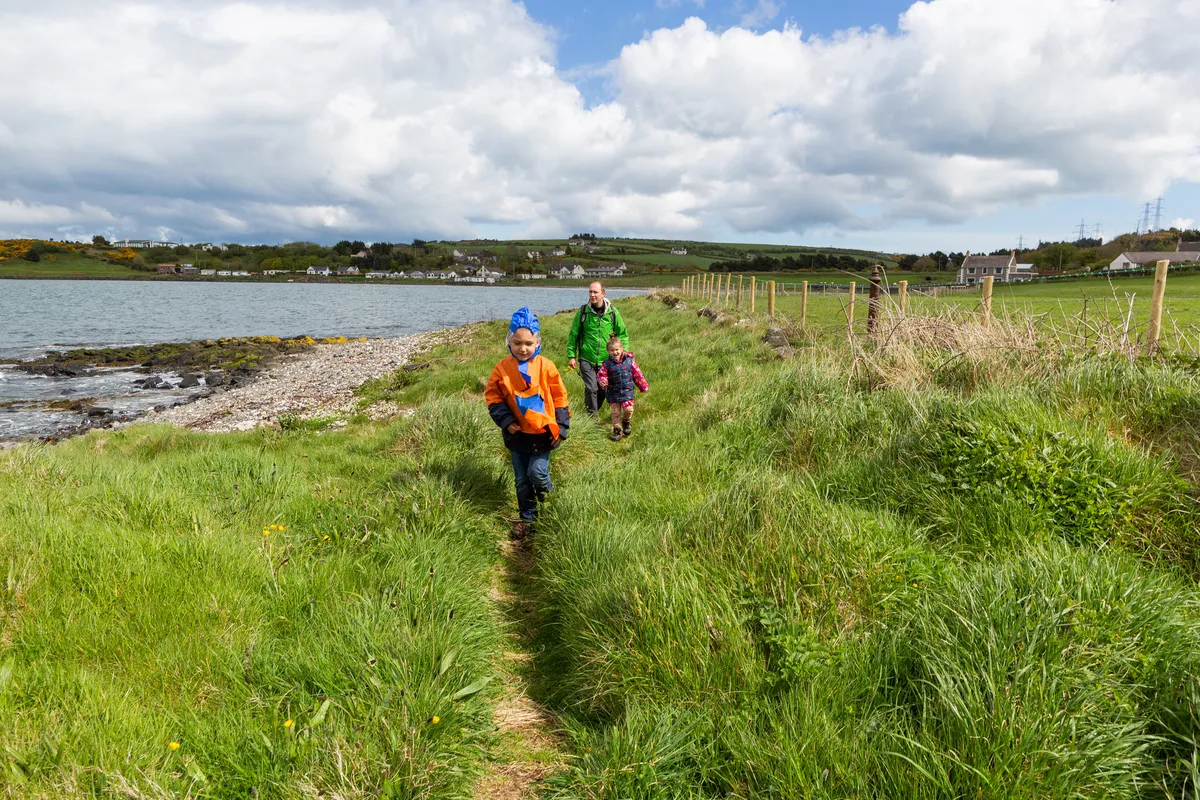
Head north and you will reach Larne and the Ulster-American memorial. This statue of a bible-clutching family commemorates the departure of Ulster’s first emigrants to America in 1717 with an inscription that reads: “There is no other race in the United States that can produce a roll of honour so long and so shining in distinction.”
By 1775, Ulster-Scots emigrants formed a sixth of America’s population. They provided a dozen early presidents, several signatories of the Declaration of Independence, and the frontiersmen Davy Crockett, Kit Carson and Jim Bowie. Protestant followers of King William who settled in the Appalachian mountains inspired the term ‘hillbillies’.
Glenarm Castle
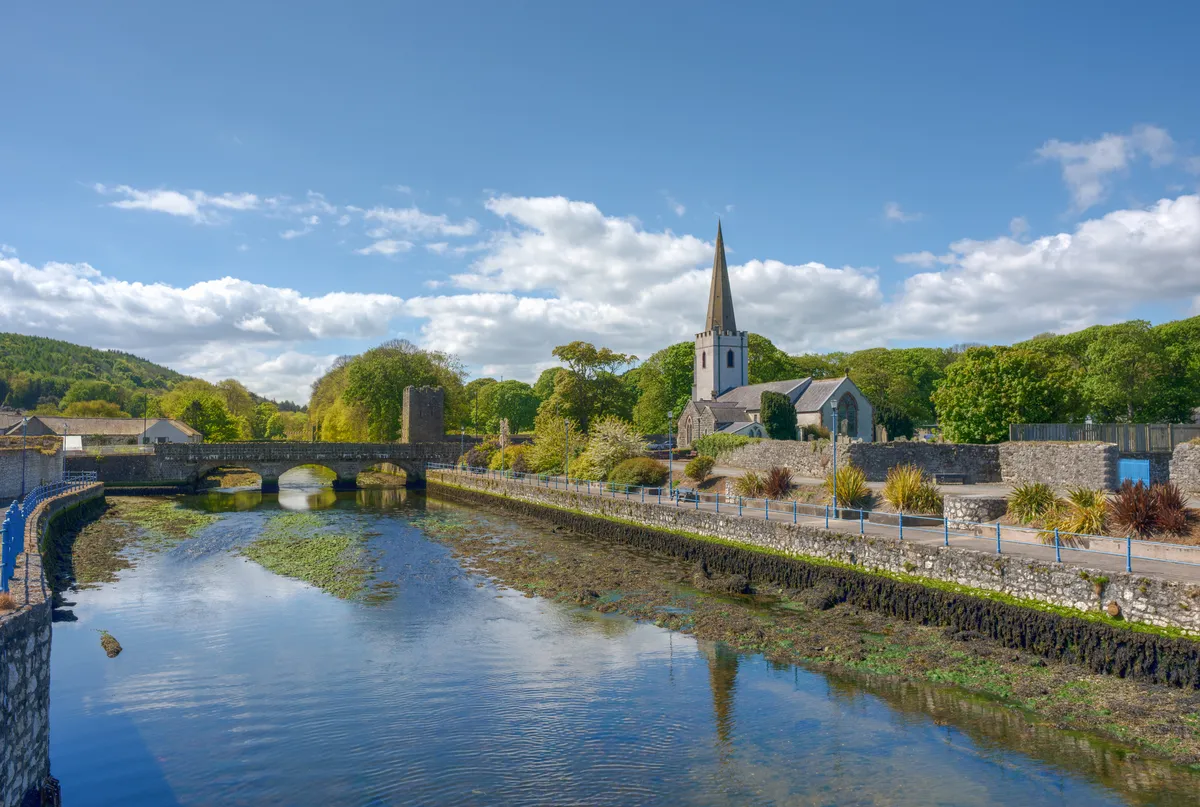
The real beauty begins beyond Larne. A single tranquil road hugs the winding coast, and in the clear light of a seemingly endless early summer’s evening it passes fields of wild irises and sandy beaches, past Glenarm Castle whose wonderful walled garden is now open to the public.
Carnlough
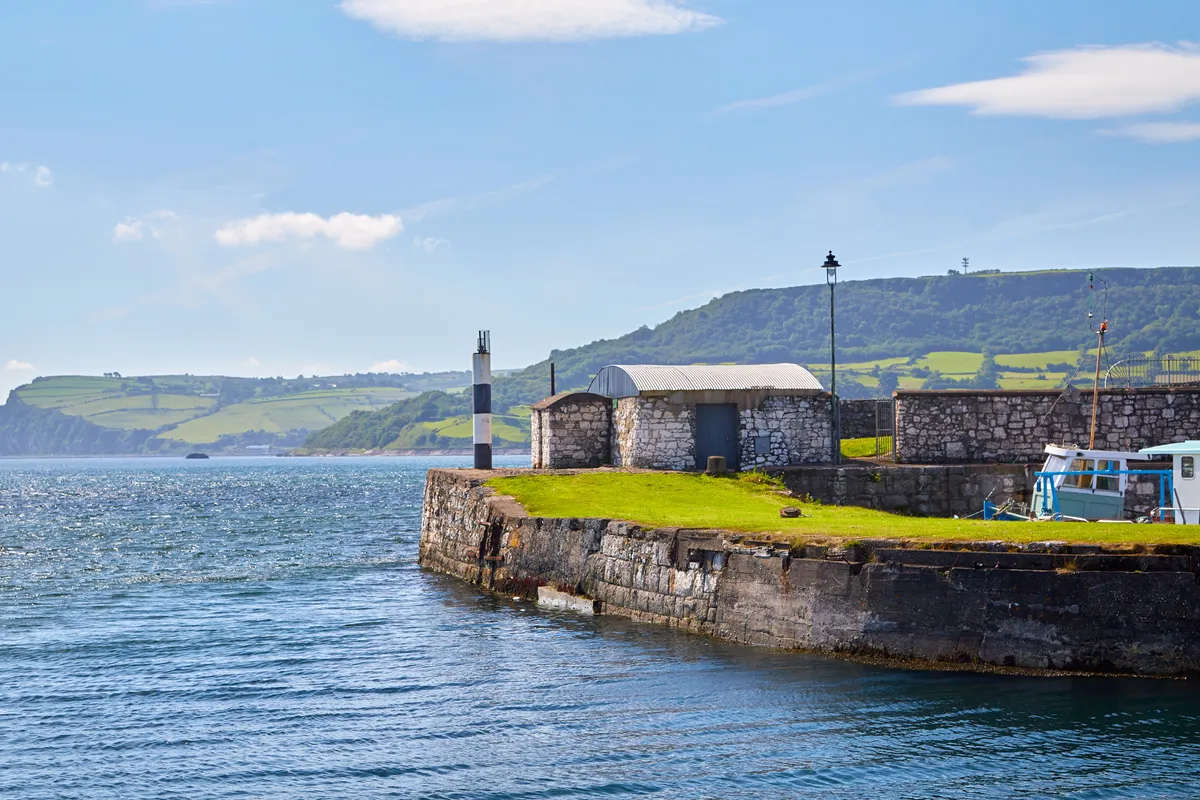
This east-coast village has a picturesque harbour overlooking Carnlough Bay, and Londonderry Arms is a great places to stay.
The Marchioness of Londonderry built the hotel as a coaching inn in 1848. Her grandson later bequeathed it to his second cousin, Sir Winston Churchill, but the great man’s memory is rather eclipsed by that of a great racehorse – Arkle. Hairs from the steeplechaser’s tail and an iron shoe from his hoof have pride of place in the bar that bears the horse’s name.
Famine Stone
A little north of Carnlough is the Famine Stone, a massive limestone boulder on which the aforesaid Marchioness had engraved: “An imperishable memorial of Ireland’s affliction and England’s generosity in the year 1846-47.” Given that Ireland lost a quarter of its population to starvation or emigration during the famine, the offensive words were long ago defaced. Even today the shells of long-abandoned stone cottages litter the empty countryside.
Cushendall and Cushendun
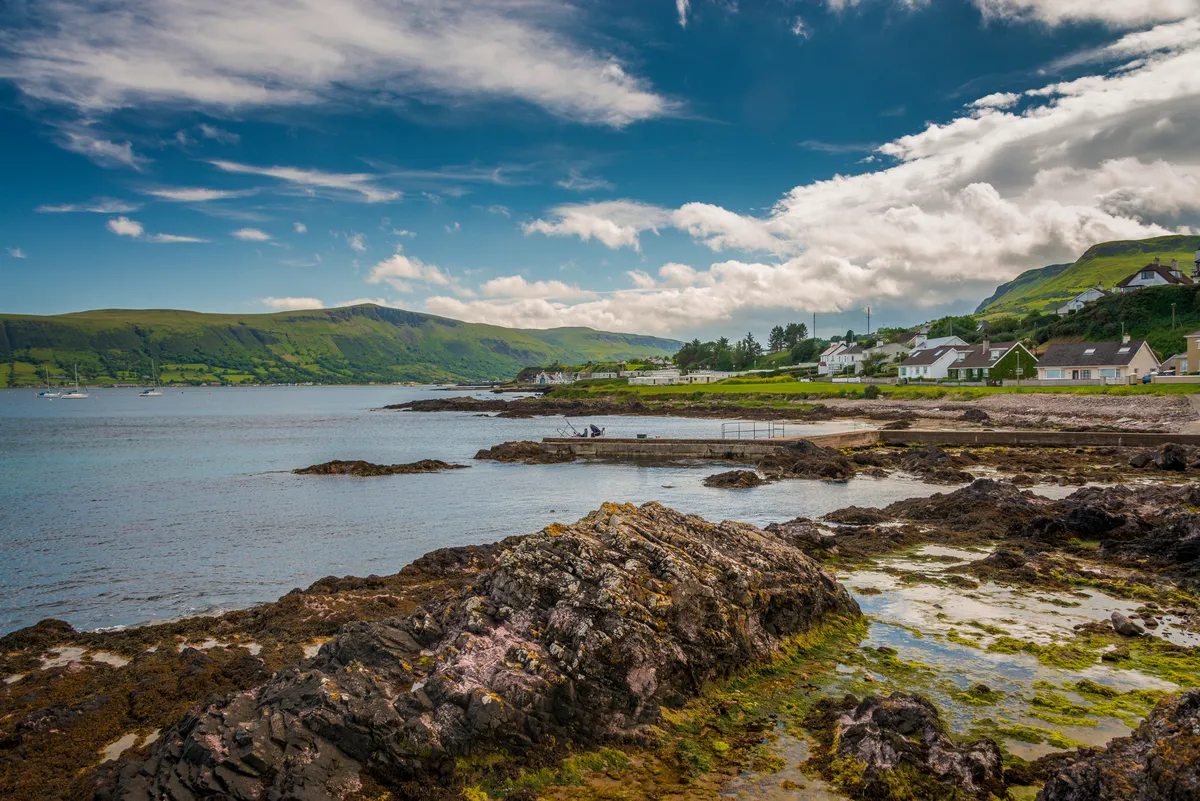
Continue on and you will reach Cushendall, whose ancient tower once served as “a place of confinement for idlers and rioters”, and Cushendun, near which there is another large boulder snared in the roots of an ancient tree with a small altar beside it. Roman Catholics would furtively worship at this Mass Rock when the penal laws banned them from practising their religion in the early 18th century. A local priest still conducts a service there each summer.
Cushendun’s sea caves made waves as the ominous Stormlands in Game of Thrones but despite the fanfare, these ancient red sandstone caves remain down to earth.
Torr Head
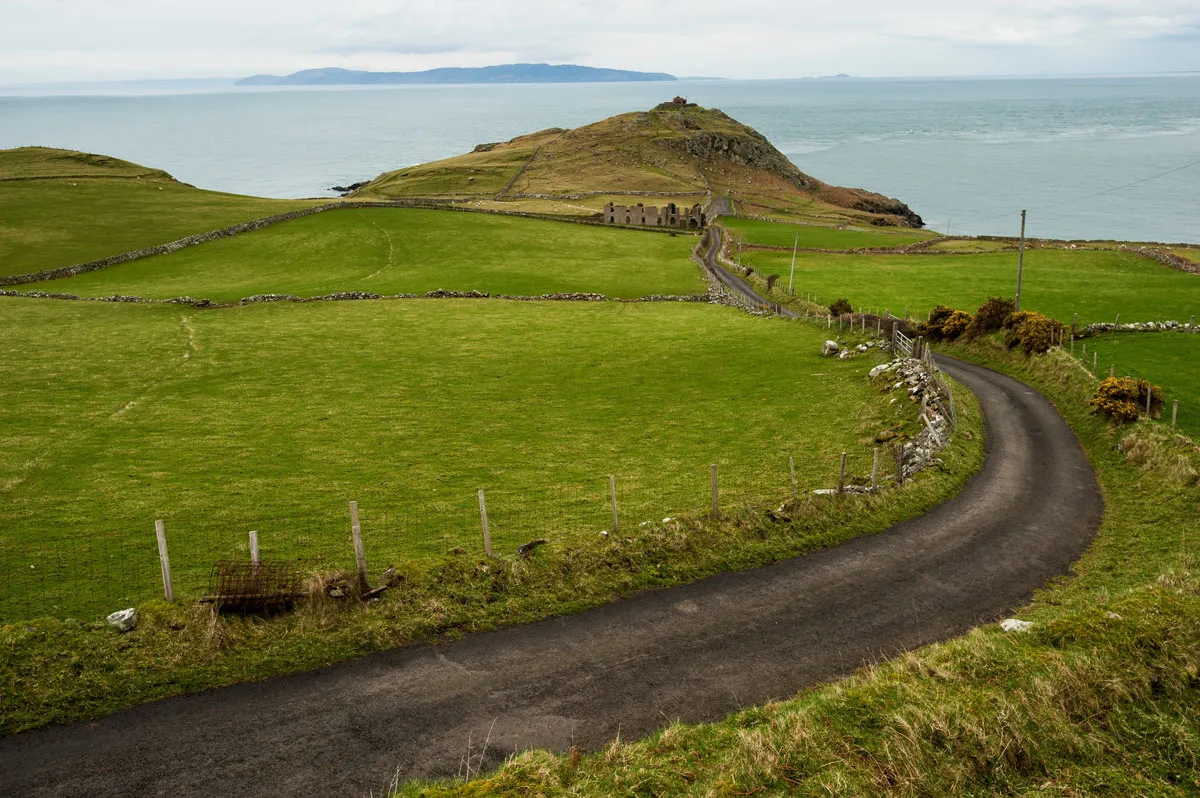
Leaving Cushendun, you have the option to abandon the main road for a tiny ribbon of tarmac that loops round the north-easternmost point of Northern Ireland via Torr Head. The lane is flanked by gorse of impossible yellow, and fields of impossible green that fall away to a silver sea far below. On a clear day you can just make out the Mull of Kintyre across 12 miles of serene water.
Ballycastle
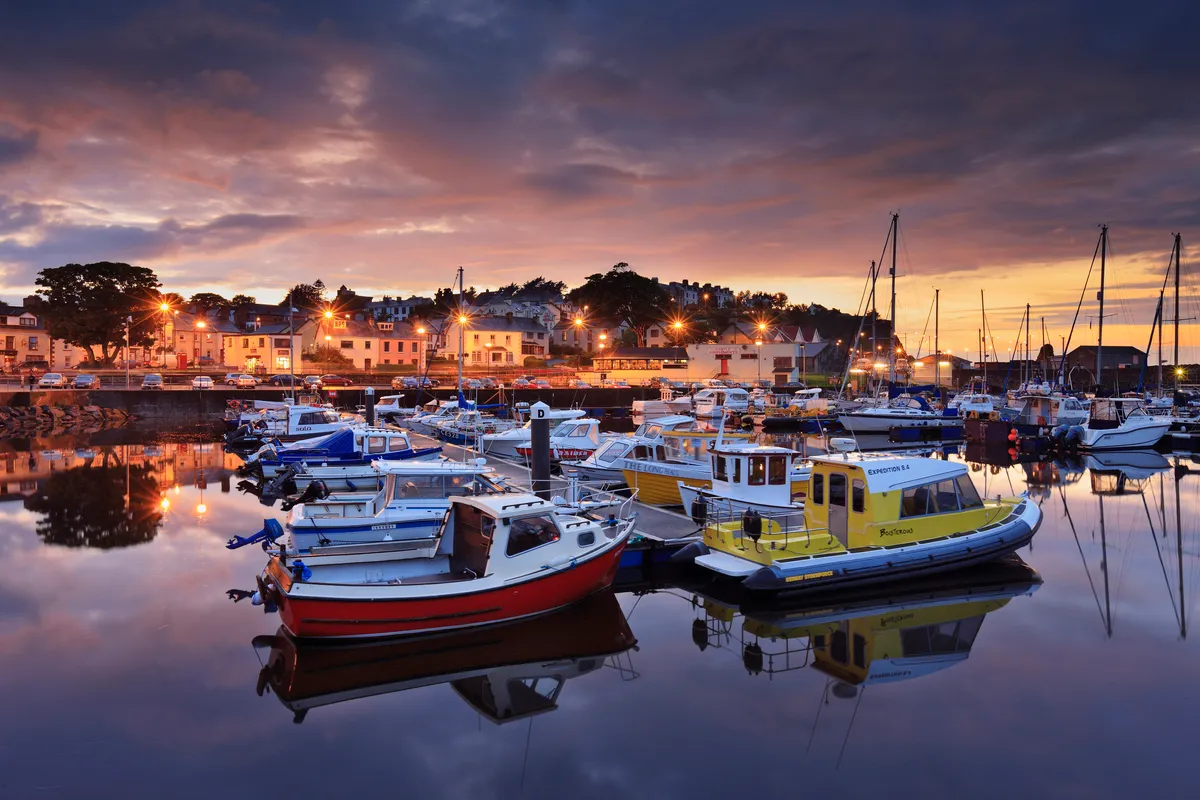
West of Torr Head is Ballycastle where, in 1898, Guglielmo Marconi found the first commercial use for his newly invented radio transmitter. At the behest of Lloyds of London, he established a radio link to Rathlin Island, six miles out to sea, so the islanders could report on passing ships.
Rathlin Island
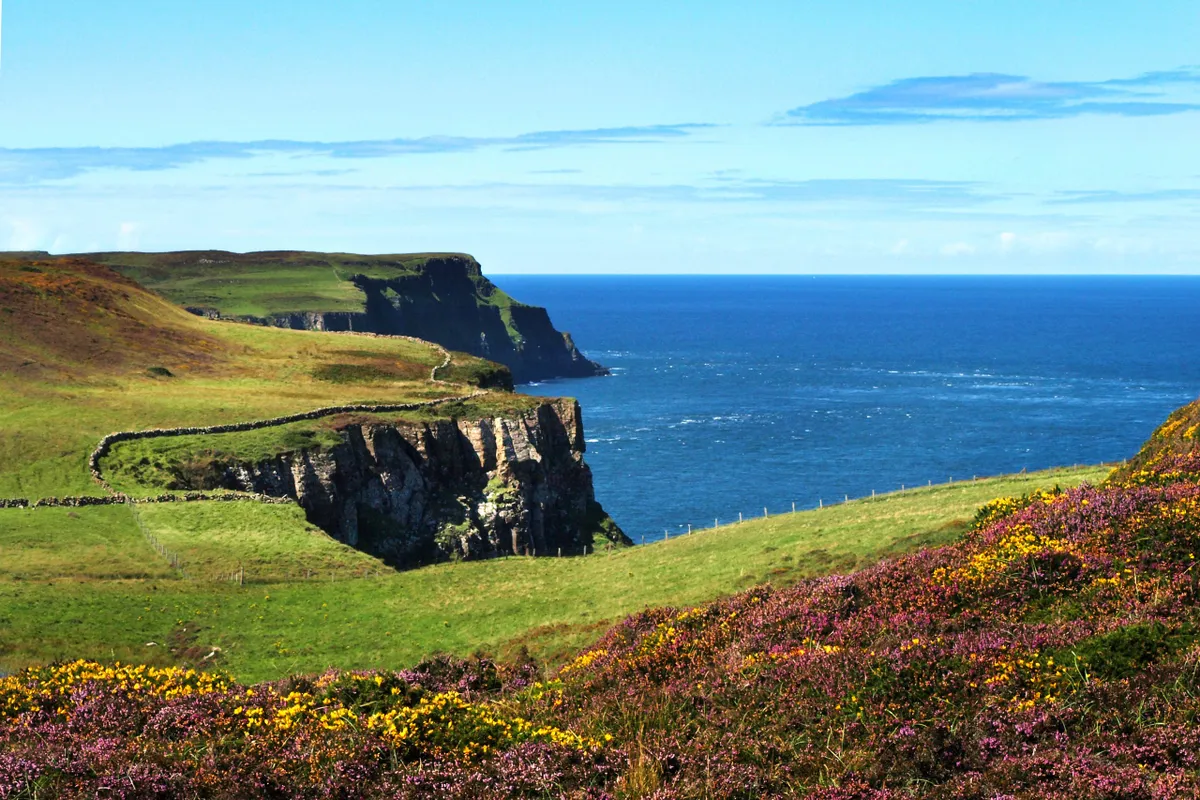
You can take the ferry to Rathlin, an L-shaped wedge of moorland resting atop fortress-like cliffs with one small community clustered around the harbour. In 1306, Robert the Bruce took refuge in a cave here, following his defeat by the English at Perth. He was so inspired by the perseverance of a spider spinning its web that he returned to win the Battle of Bannockburn and the Scottish throne. Today the Manor House offers rather more comfortable accommodation, and the population of 140 is swelled by visitors who come less for refuge than the abundant bird life.
Walk along Rathlin’s western extremity where, far below, the rocky outcrops are covered by tens of thousands of puffins, razorbills and guillemots – not to mention their pungent excrement.
Carrick-a-Rede
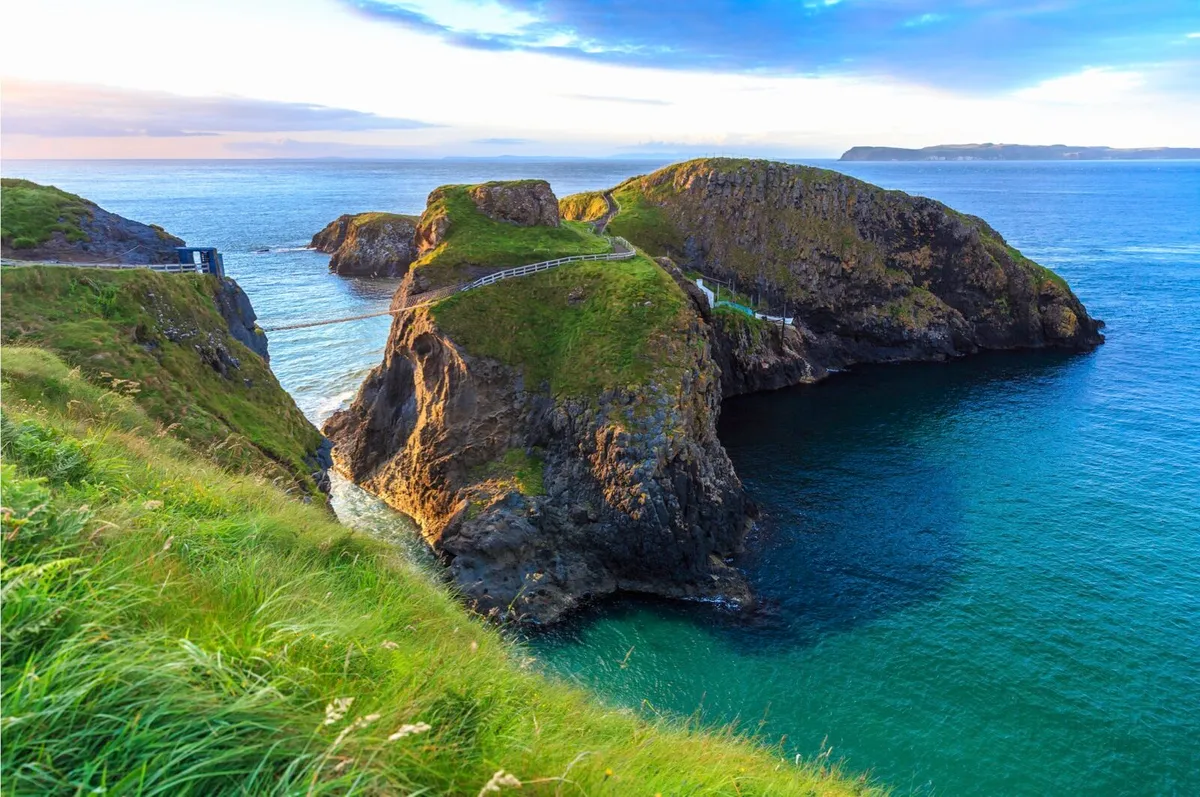
Back on the mainland, make your way up the steep hill out of Ballycastle and head west along the north Antrim coast towards some of its better known attractions. First stop is Carrick-a-Rede, a small island of rock reached by a bouncy rope bridge strung across a narrow channel.
Giant’s Causeway
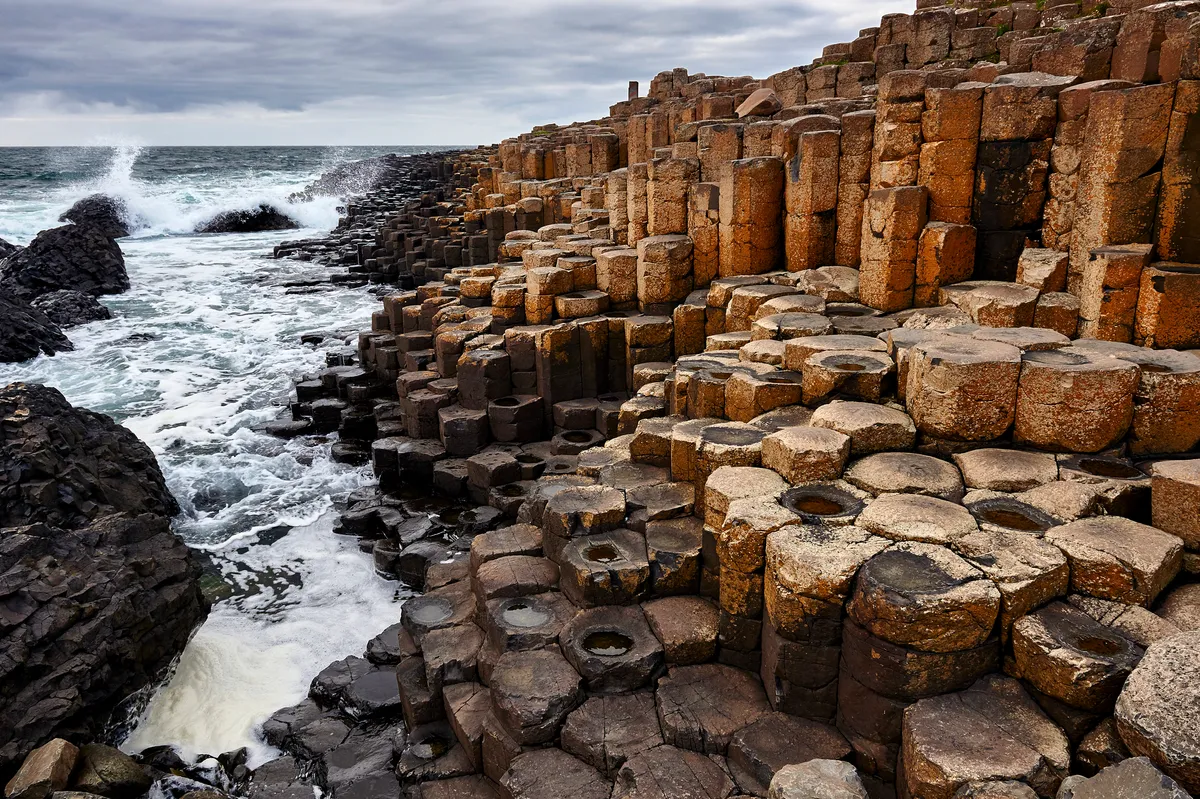
A few miles further on, past the sublime white sand crescent of Whitepark Bay, we reach the geological wonder that is the Giant’s Causeway. Comprised of some 40,000 upright hexagonal basalt columns, each of a different height but slotted together like a perfect honeycomb, the sea-girt promontory is remarkable.
Dunluce Castle
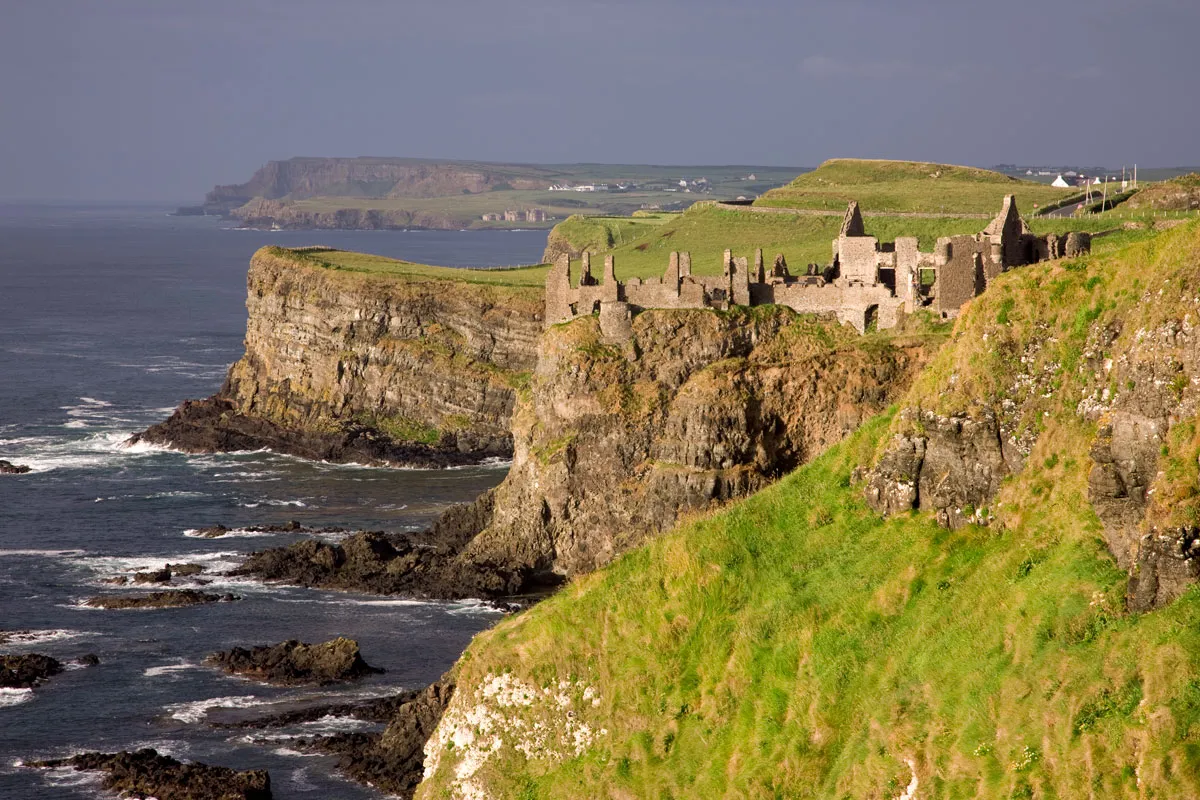
The ruins of this magnificent medieval fortress perch on top of the steep, sheer cliffs of a rocky promontory along the gorgeous Antrim coast. Not far away is the Giant’s Causeway, so two top heritage sites in one! The views are stunning, its bloody history is well told, and fans of Game of Thrones may recognise it as the seat of the House of Greyjoy.
Downhill Demesne
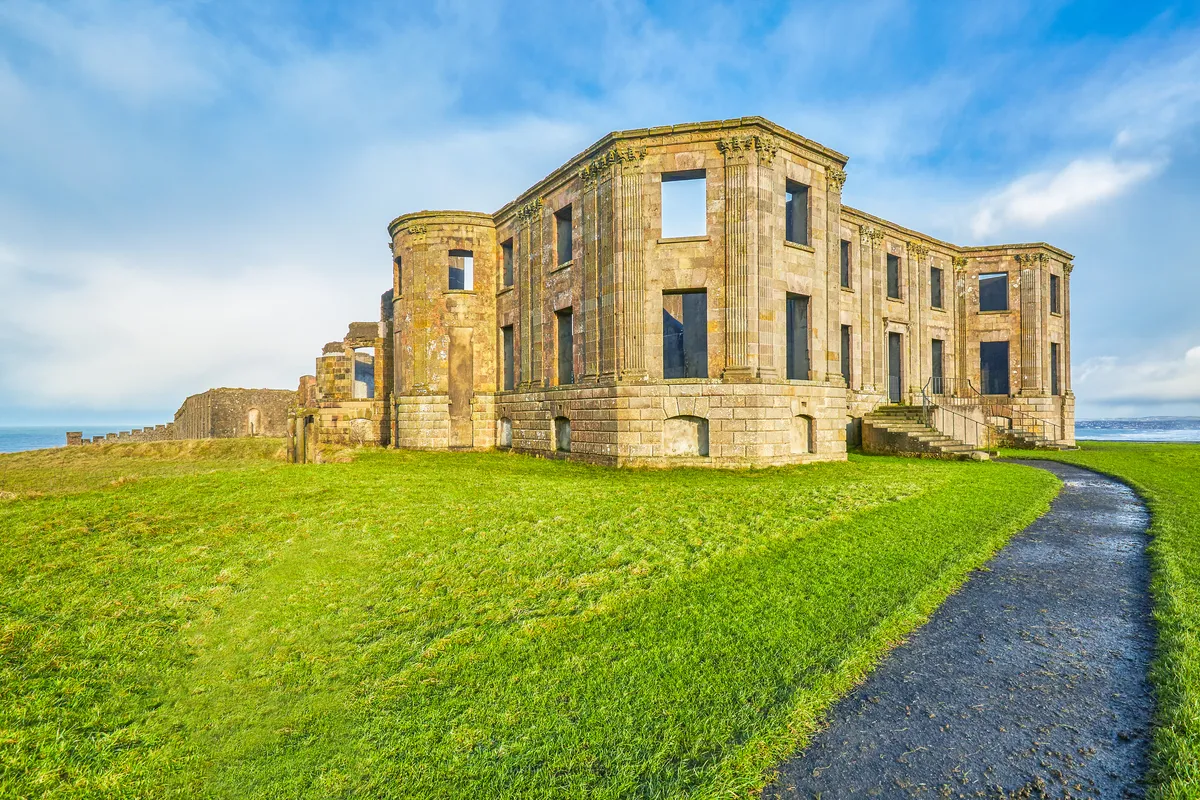
Beyond the resort towns of Portrush and Portstewart – Northern Ireland’s so-called ‘Riviera’ – is Downhill Demesne, a National Trust property. Walk across the vast expanse of rolling grass filled with wildflowers to the shell of a ruined 18th-century mansion. This was built by Frederick Hervey, the colourful Earl of Bristol and Bishop of Derry, who sprinkled flour in the upstairs corridors at night so he could tell which guest had visited whom.
Mussenden Temple
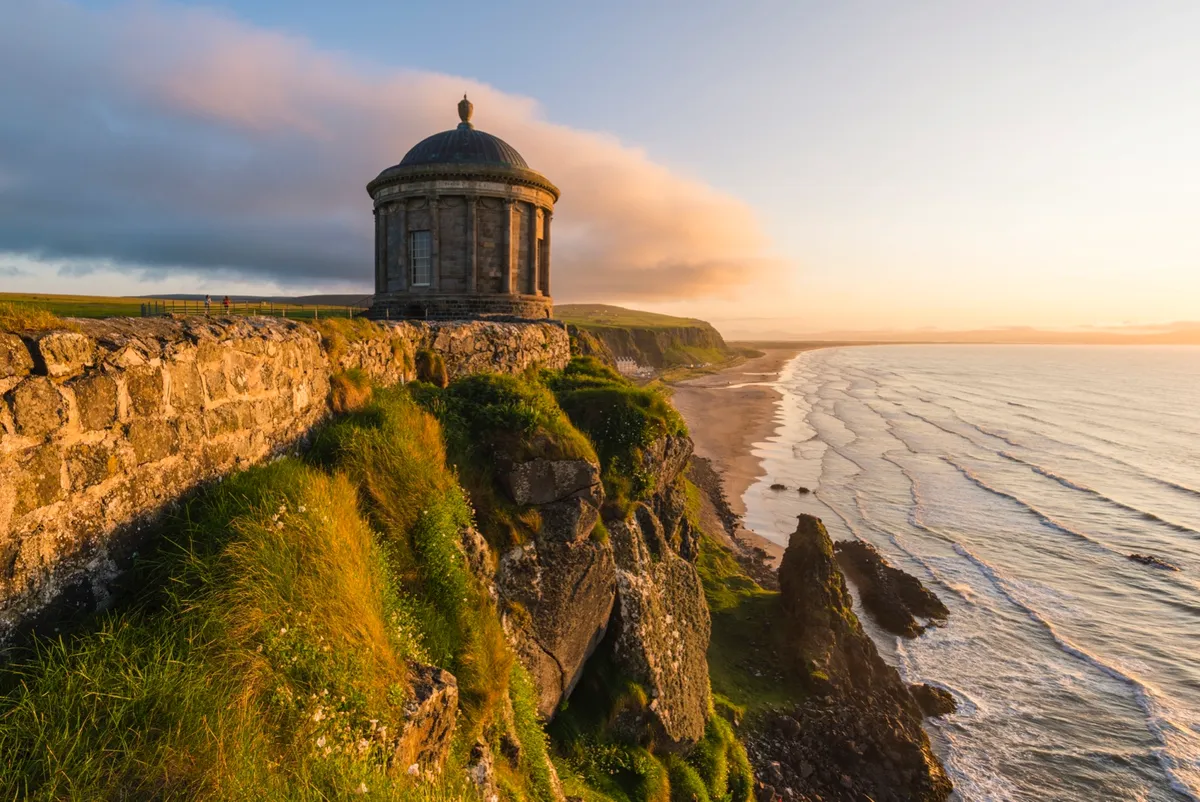
Beyond Downhill Demesne, perched dramatically on the cliff overlooking the sea, stands the exquisite Romanesque folly Mussenden Temple, which held Hervey’s library and was named after his lover. Its inscription reads: “Tis pleasant, safely to behold, from shore, the rolling ship and hear the tempest roar.”
Binevenagh Mountain
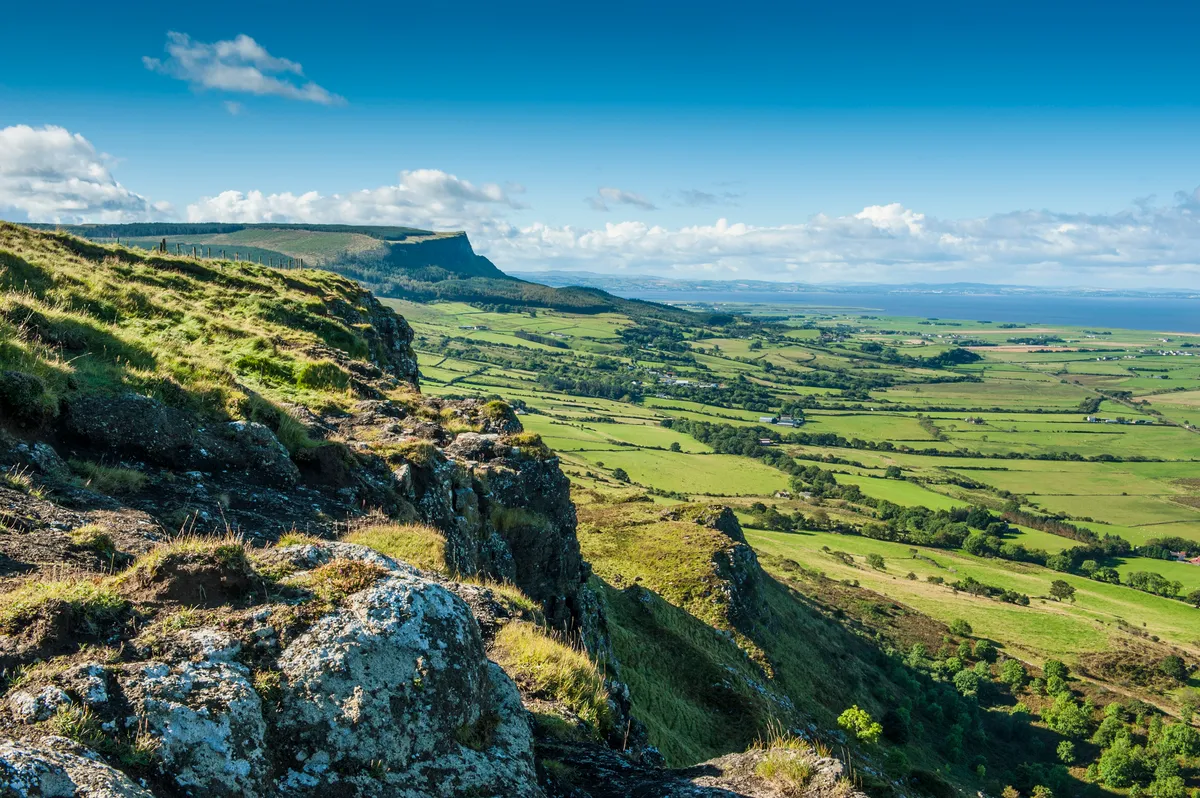
Climb to the summit of Binevenagh Mountain and you are rewarded with a stunning panorama of land, sea and sky. To the north lies the vast blue Atlantic and Islay, the most southern of the Inner Hebrides. To the west, we gaze across the mouth of Lough Foyle to the distant hills of Donegal’s Inishowen peninsula. Behind us lie moors and the Sperrin Mountains.
Antrim and Game of Thrones
Tourism in Northern Ireland has increased dramatically during the past 20 years ago. And much of this is thanks to Game of Thrones. Between Carrick-a-Rede and the Causeway we pass the picturesque harbour at Ballintoy, thankfully far calmer than its alter-ego of Lordsport in the fantasy drama. Beyond the Causeway, teetering on the edge of vertiginous cliffs, the turreted Dunluce Castle recalls the House of Greyjoy – without its armour-clad seafarers. And a few miles inland, the beech-lined avenue of Dark Hedges, known to viewers as the grand Kingsroad (right), draws keen crowds.
Best walks along the Antrim coast
The Causeway Coast, County Antrim
Escape the crowds on a deserted coastal path just minutes from the Giant’s Causeway. Map and route.
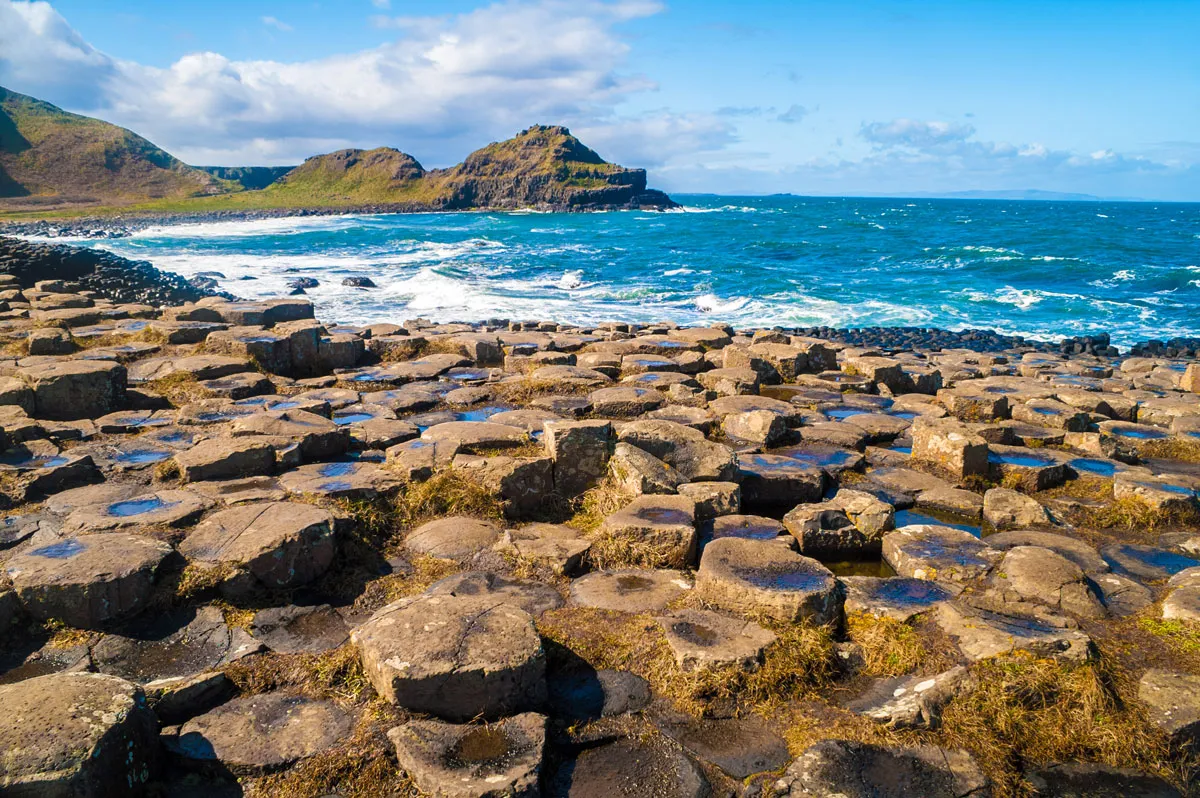
Rathlin Island
The island offers trails of one to four miles with wonderful views of lighthouses, the Atlantic and the Scottish islands. Watch out for the amazing seabirds and seals basking on the shore. Map and route.
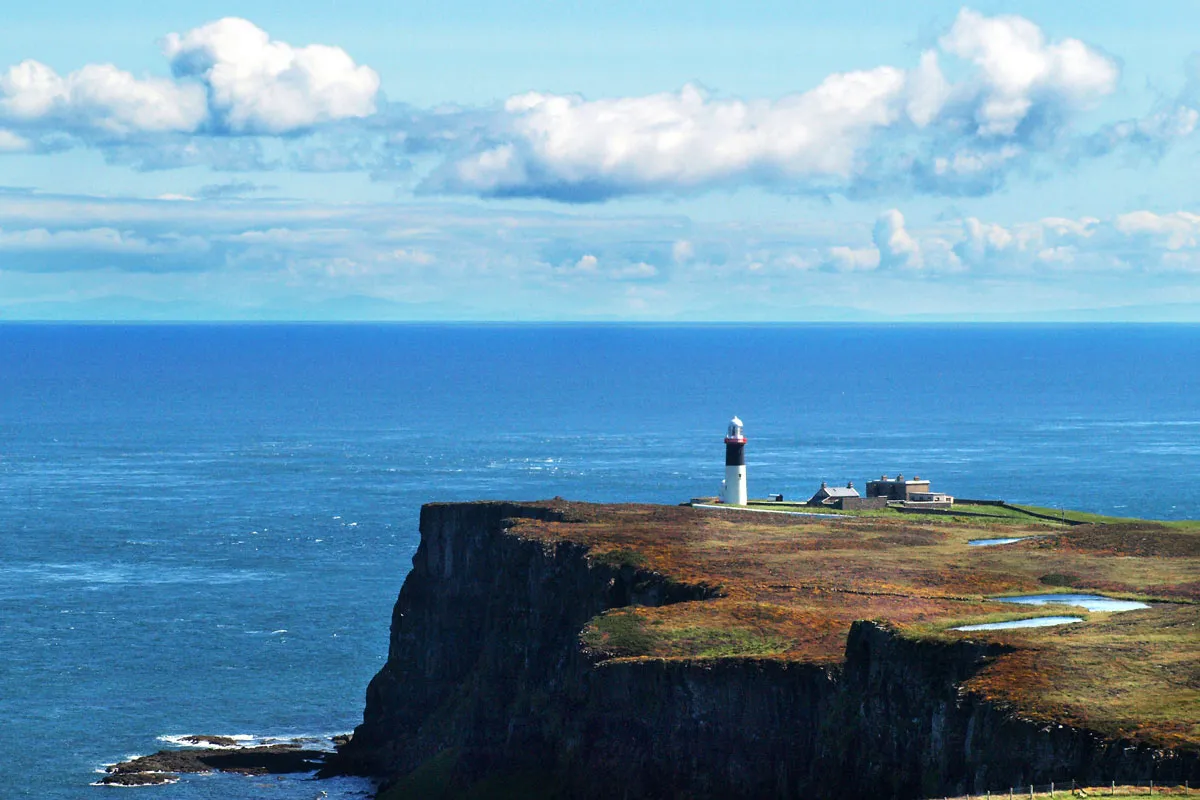
North Antrim Cliff Path
The five-mile cliff path begins at ruined Dunseverick Castle, and winds around beautiful headlands and bays before offering hikers a panoramic view of its final destination, the Giant’s Causeway. The 162 Shepherds Steps lead down to the Unesco World Heritage Site. Map and route.
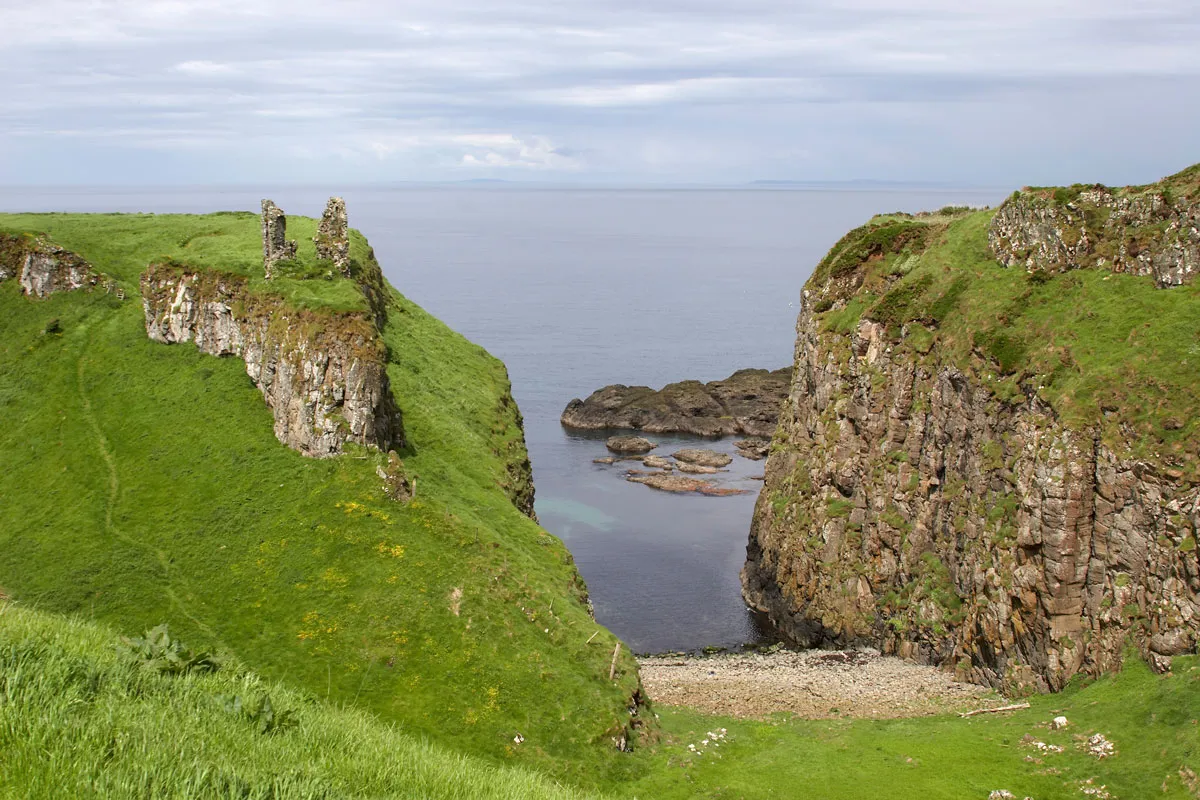
Where to stay
The Londonderry Arms
This charming, old-fashioned coaching inn once owned by Sir Winston Churchill is just across the road from the harbour in Carnlough. If traffic disturbs you, ask for a room at the back. glensofantrim.com
Manor House
Facing you as you step off the ferry on Rathlin Island is the newly refurbished, whitewashed, 18th-century Manor House. Look no further for accommodation. manorhouserathlin.com
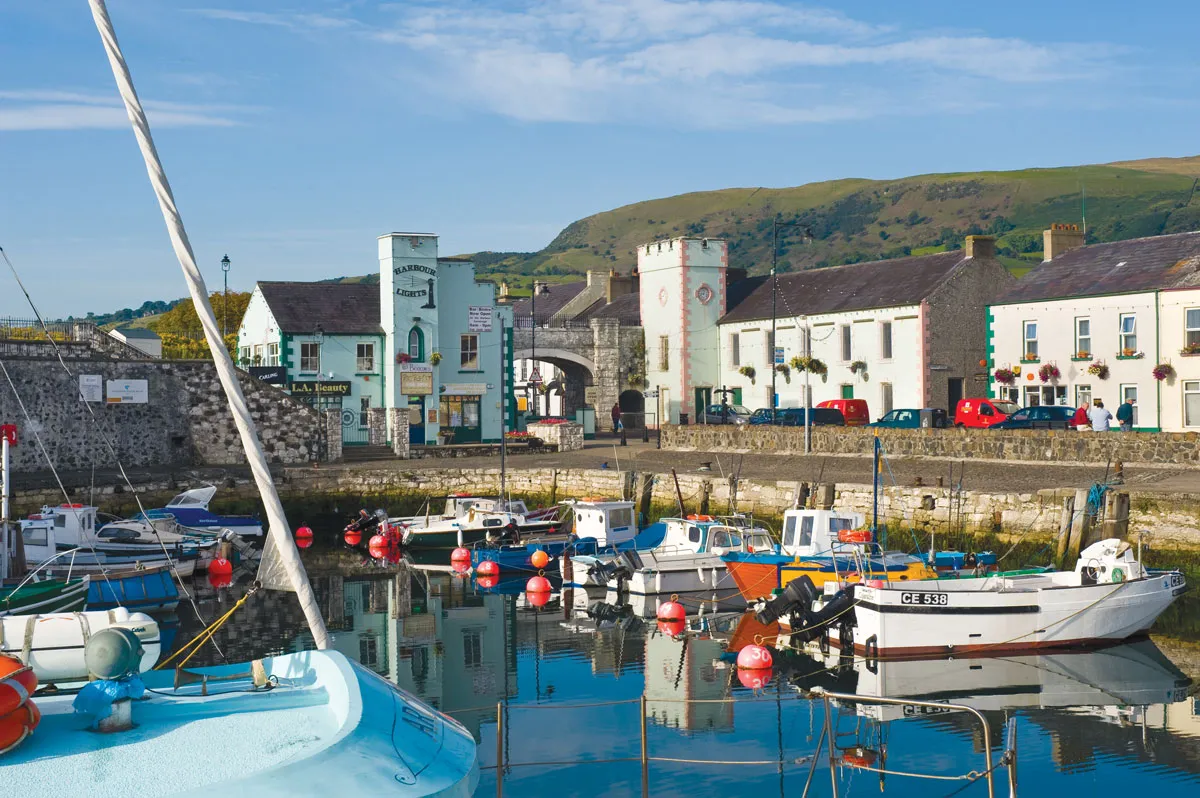
The Brown Trout Inn
A few miles inland from the attractions of the north Antrim coast at Aghadowey, this friendly and comfortable inn has good food and its own nine-hole golf course. You would never guess that it was blown up by the IRA in 1973. browntroutinn.com
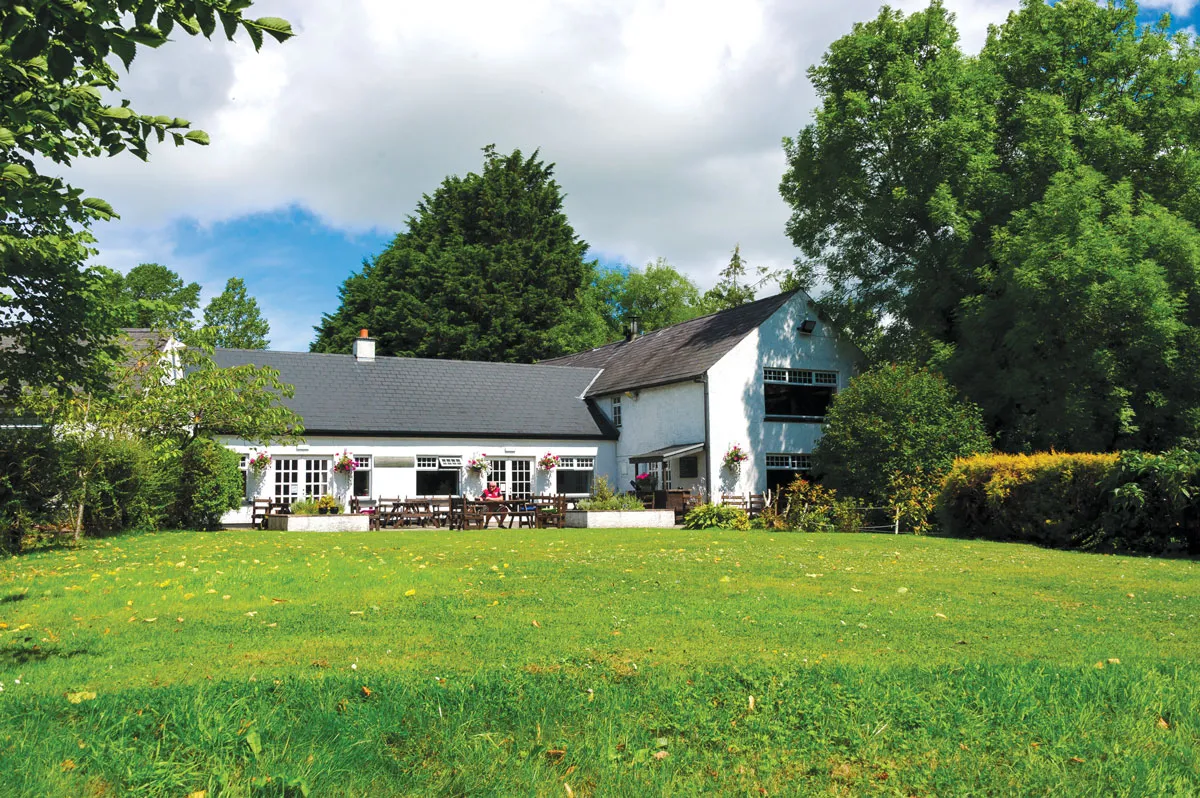
Food and drink
Mary McBride’s Pub
Once claimed to be the smallest pub in Ireland before an extension in the 90s, this Cushendun inn still has history and charm. In 2015 it opened a seafood bistro, The Little Back Door, upstairs. mcbridescushendun.com
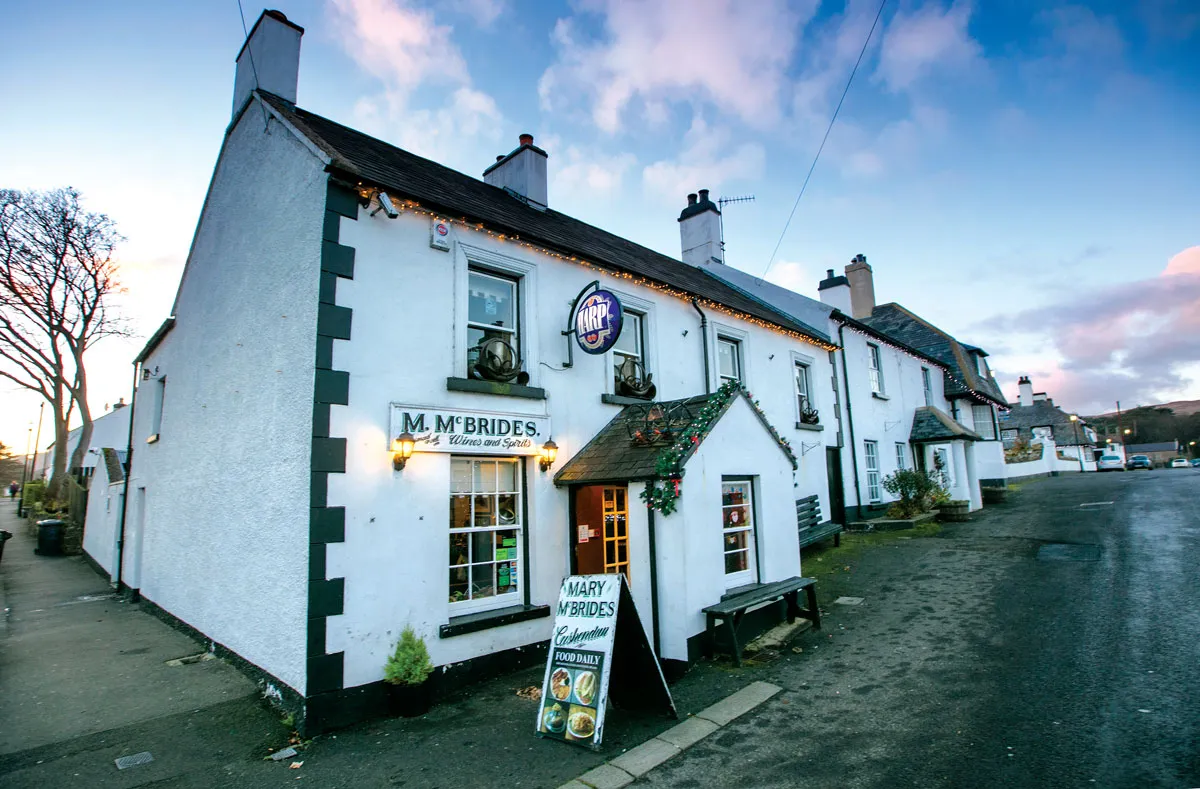
Map of the Antrim Coast
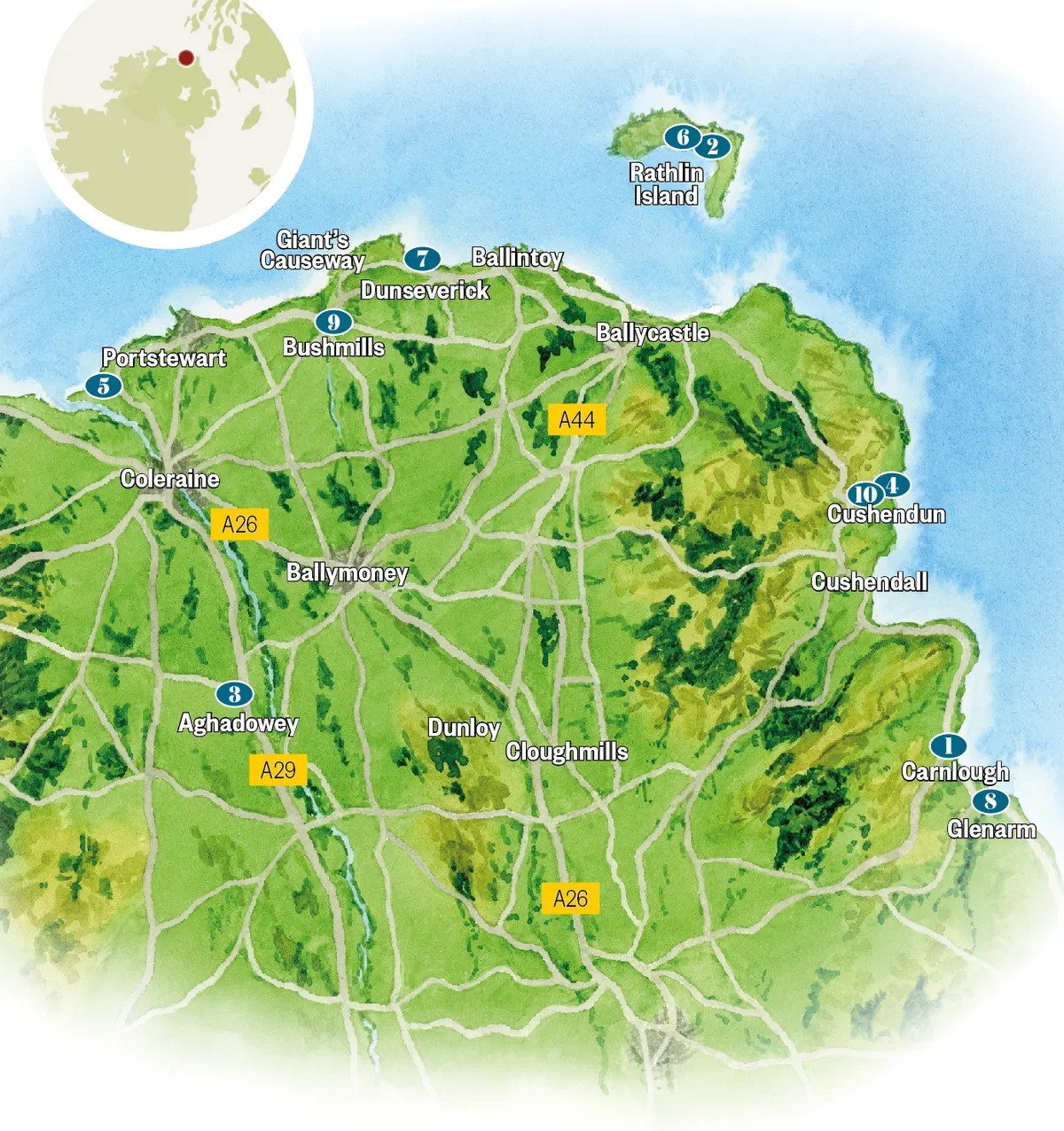
Martin Fletcher is a former foreign and associate editor of The Times, and now a freelance writer based in London. He is the author of Silver Linings: Travels Around Northern Ireland (Little Brown, 2000).
